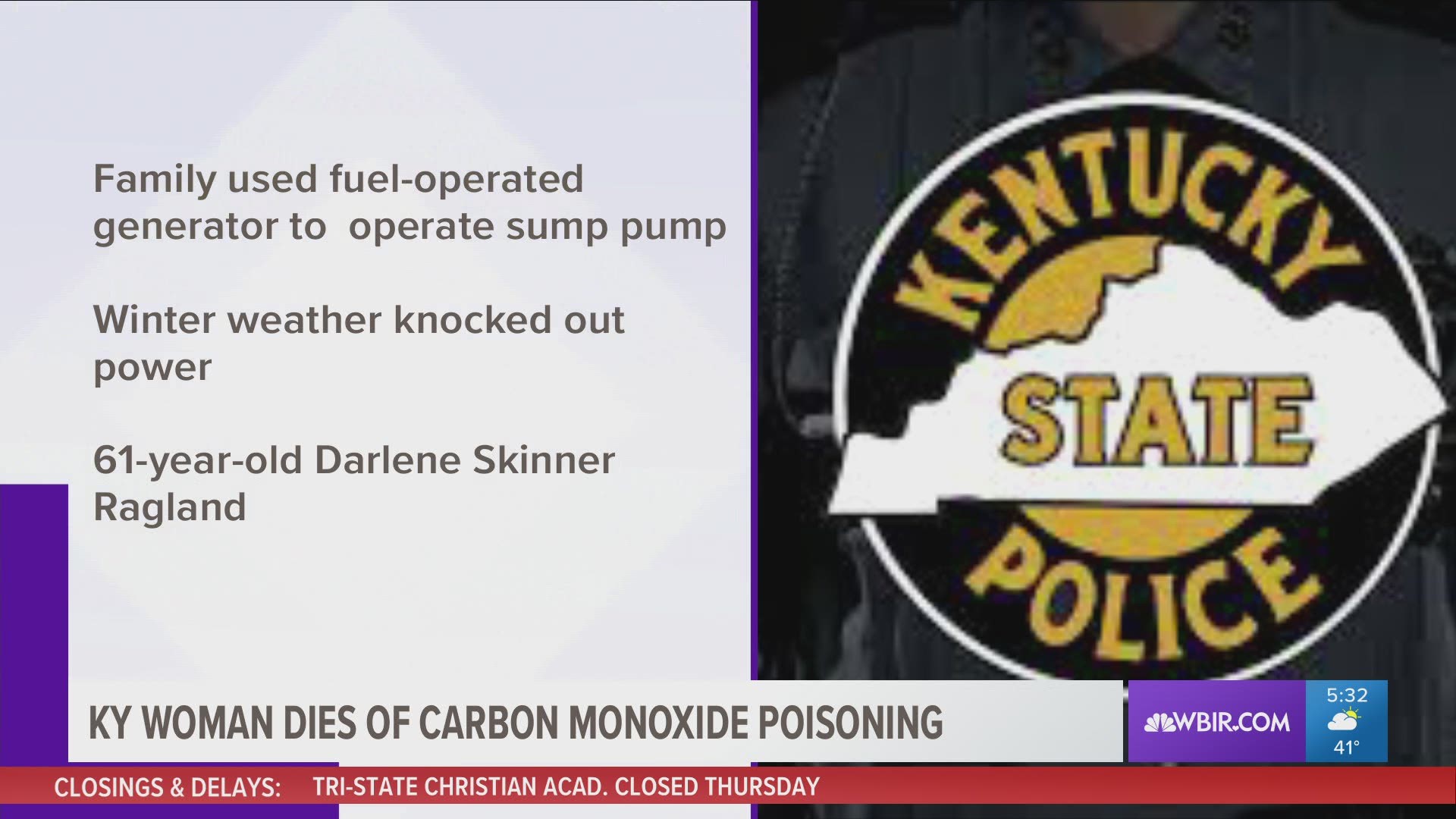A Laurel County, Ky., woman died Tuesday and her family members were sickened by a build up of carbon monoxide in their home after they began using a generator when they lost electric power, police said.
"The initial investigation revealed the home was without power due to the winter weather and the occupants of the residence had been using a fuel-operated generator to help operate a basement sump pump," according to a notice Wednesday from Kentucky State Police.
The woman was identified as Darlene G. Skinner Ragland, 61, according to authorities. She was pronounced dead at Baptist Health in Corbin.
Her husband, Tony Ragland, and a grandchild were treated and released from the University of Kentucky Medical Center in Lexington.
The death investigation is continuing.
Carbon monoxide is an odorless, colorless gas that can sicken and kill people and animals if levels are high enough.
According to the Centers for Disease Control and Prevention, more than 400 Americans die from unintentional CO poisoning not linked to fires, more than 20,000 visit the emergency room, and more than 4,000 are hospitalized.
Authorities warn that using a generator without proper ventilation inside and use of a CO monitor can be perilous.
CDC tips about carbon monoxide:
- Install a battery-operated or battery back-up CO detector in your home and check or replace the battery when you change the time on your clocks each spring and fall. Place your detector where it will wake you up if it alarms, such as outside your bedroom. Consider buying a detector with a digital readout. This detector can tell you the highest level of CO concentration in your home in addition to alarming. Replace your CO detector every five years.
- Have your heating system, water heater, and any other gas, oil, or coal burning appliances serviced by a qualified technician every year.
- Do not use portable flameless chemical heaters indoors.
- If you smell an odor from your gas refrigerator have an expert service it. An odor from your gas refrigerator can mean it could be leaking CO.
- When you buy gas equipment, buy only equipment carrying the seal of a national testing agency, such as Underwriters’ Laboratories.
- Make sure your gas appliances are vented properly. Horizontal vent pipes for appliances, such as a water heater, should go up slightly as they go toward outdoors, as shown below. This prevents CO from leaking if the joints or pipes aren’t fitted tightly.
- Have your chimney checked or cleaned every year. Chimneys can be blocked by debris. This can cause CO to build up inside your home or cabin.
- Never patch a vent pipe with tape, gum, or something else. This kind of patch can make CO build up in your home, cabin, or camper.
- Never use a gas range or oven for heating. Using a gas range or oven for heating can cause a build up of CO inside your home, cabin, or camper.
- Never burn charcoal indoors. Burning charcoal – red, gray, black, or white – gives off CO.
- Never use a portable gas camp stove indoors. Using a gas camp stove indoors can cause CO to build up inside your home, cabin, or camper.
- Never use a generator inside your home, basement, or garage or less than 20 feet from any window, door, or vent.
- When using a generator, use a battery-powered or battery backup CO detector in your home.

